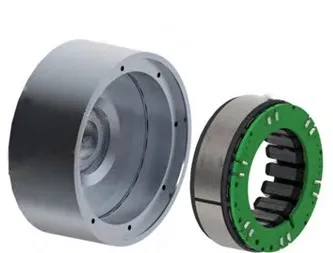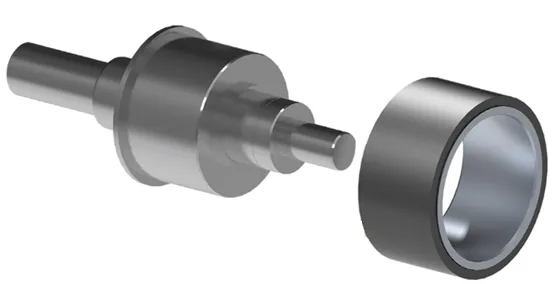Frameless or frameless, that is indeed the question
When we incorporate servo motors into new machine designs, we often face various challenges: for example, under what circumstances would a frameless motor be a better choice than a traditional framed motor. To answer this question, we need to first understand the composition of a frameless motor. Below, please follow Xiao Ke to find out: disassemble the composition of a frameless motor and explore the three key considerations that can indicate that your machine is suitable for a frameless solution .
Frameless motors are the components of traditional electric motors that produce torque and speed, but without a shaft, bearings, housing, feedback or end caps. Frameless motors consist of two components: the rotor and the stator . The rotor is usually the inner component, consisting of a rotating steel ring assembly with permanent magnets, mounted directly on the machine shaft. The stator is the outer component, consisting of toothed steel laminations encased in copper windings that generate electromagnetic forces. The stator fits compactly within the body of the machine housing.

When you start choosing a motor to fit your machine, let’s ask ourselves a few questions:
Does the machine size need to be smaller?
Do you need to remove unreliable mechanical components?
Does the machine need to operate in a harsh environment such as high temperature or corrosion?
If the answers to these questions are all yes, then the frameless motor must be your first choice!
When floor space is important, machine size can be an advantage. In addition to minimizing the space occupied by the motor, integrating a frameless motor into the machine structure can also provide further space savings by eliminating gearboxes, belts, and pulleys when using a frameless design for direct drive applications.

By integrating frameless motor elements into the machine, flexible machine elements such as couplings or belts can be removed, thereby improving machine performance. Direct drive solutions minimize system flexibility, providing more reliable performance. Every transmission in a mechanical system (including couplings, belts, gears, etc.) introduces a flexible element that reduces the bandwidth of the system. Reduced bandwidth results in longer motion settling times and reduced operating efficiency. Integrated motors also improve dynamic response and system efficiency, and simplify the addition of liquid cooling to significantly increase available continuous torque.
Harsh environmental conditions may include high-pressure washdowns with corrosive chemicals, high temperatures, radiation or vacuum. Motor housings that need to operate in such environments can be used to integrate frameless motors, taking advantage of the benefits of integrated motor design without significantly increasing costs. Frameless motors can also have their motor components integrated directly into machine elements, ensuring they are not negatively affected by the environment.

It can be seen that frameless motors can save space, reduce the number of components, and improve system performance . Saving space can reduce the machine footprint and save valuable facility space. Reducing the number of mechanical components will naturally improve the overall reliability of the machine. Enhancing machine performance can drive productivity growth and improve the overall efficiency of the machine .



























 XINDA
XINDA